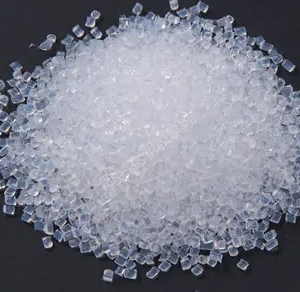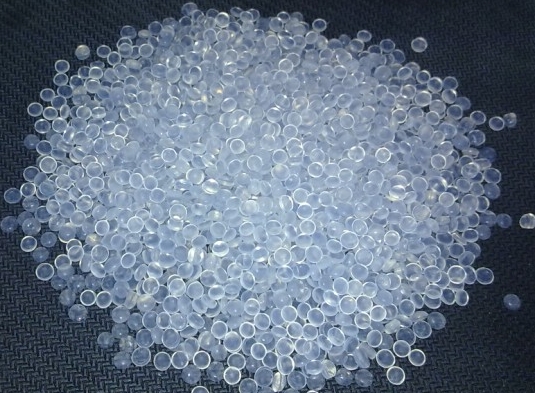You may often see PTFE or Teflon appearing together. Are you sometimes confused? You can’t tell what they are, what the differences are, and why they often occur together. The following content will explain the differences and relationships between them clearly for you, and you will know them professionally from now on.
What is PTFE?
PTFE is the name of a chemical material. Its full name is Poly tetra fluoroethylene, and its abbreviation is PTFE. It is a high molecular polymer made by polymerizing tetrafluoroethylene as a monomer. Its chemical formula is (C2F4)n, and it is commonly known as the “King of Plastics”. White waxy, translucent, excellent heat and cold resistance.
This material is resistant to acids, alkalis, and various organic solvents and is almost insoluble in all solvents. At the same time, PTFE has the characteristics of high-temperature resistance, and its friction coefficient is extremely low, so it can not only provide lubrication but also become an ideal coating for easy cleaning of the inner layer of water pipes. PTFE plastic has excellent chemical stability and excellent corrosion resistance ((It is one of the best corrosion-resistant materials in the world today. It can withstand all chemicals except molten metal sodium and liquid fluorine. It can withstand almost any concentration. Strong acid, strong alkali, oxidizing solid media and organic solvents, its chemical corrosion resistance exceeds all existing plastics, and it is widely used in various materials that require resistance to acids, alkalis and organic solvents)), and heat resistance and it can be boiled in water. It cannot change. The temperature range is -195℃~250℃, and the long-term use temperature is -100℃~250℃. It has excellent sealing, high lubrication and non-stickiness, electrical insulation and good anti-ageing endurance.

1.1 Characteristics of PTFE
- Appearance of PTFE: PTFE white waxy, translucent
- Melting point of PTFE: 321 to 344°C
- The boiling point of PTFE: 400 ℃
- Water solubility of PTFE: insoluble in any solvent
- The hardness of PTFE: 55-65 (Rockwell Hardness)
- This range is suitable for standard PTFE materials. If specific variants or modified materials are considered, such as expanded PTFE or modified PTFE, the hardness of these materials may also remain in the same range. Compared with many other plastic materials, PTFE has a lower hardness, which makes it exhibit good self-lubrication and low friction coefficient in practical applications. However, despite its low hardness, PTFE still maintains a specific elastic modulus, about 0.5GPa, which explains to a certain extent that although it is easily scratched, it can still exhibit certain elasticity at low temperatures. Flexible characteristics.
1.2Main uses and application areas of PTFE
PTFE is difficult to mould but has the best overall performance, accounting for about 70% of the entire fluoroplastic production, and is used in many fields such as the chemical industry, machinery, electrical appliances, construction, electronics, automobiles, etc.
1.21 The following use
1: Seal raw materials
PTFE has excellent high-temperature resistance and chemical corrosion resistance and can be used as an ideal seal material. It can be used as hydraulic main seals, O-rings, gaskets, etc., for seals in industry or various mechanical equipment.
2: Coating paint
PTFE coating is wear-resistant and corrosion-resistant. It is often used as a coating on metals to provide surface protection and improve the anti-stick properties of the surface, such as the standard non-stick coatings in your home.
3: Medical equipment
Because PTFE has an excellent smooth surface and biological stability, it is often used in medical devices, such as prosthetic stent materials in plastic surgery, implant materials in breast augmentation surgeries, making blood filters and artificial blood vessels, etc. It can also be used in medical devices. Treat the surface to reduce conductivity or surface tension and maintain sanitary conditions, taking care to avoid direct contact with the drug.
4: Insulating materials
PTFE has good electrical insulation properties and is widely used in electrical and electronic equipment, such as cable insulation, connecting wires, insulating sleeves, etc.
5: Textile materials
PTFE fibre has excellent heat resistance and chemical resistance and can be used in high-temperature filter materials, fire-resistant clothing, aerospace materials, etc.
6: Other applications
In addition, PTFE is also used in printing and packaging, lubricating materials, the automobile industry, the plastics and rubber industry, the fibre industry and other fields, including but not limited to medical equipment, household appliances, plastics, printing, papermaking, etc.
What is Teflon?
Teflon is the general name for all hydrocarbon resins developed by DuPont in the United States. It is a trademark of DuPont Company.About 70 years ago, chemist Dr. Roy J. Plunkett invented polytetrafluoroethylene resin in DuPont’s Jackson Laboratory in New Jersey, USA. DuPont used “Teflon” as the brand name of the product. Subsequently, DuPont developed a series of products in addition to Teflon polytetrafluoroethylene resin, including Teflon AF (amorphous fluoropolymer), Teflon FEP (fluorinated ethylene propylene resin), Teflon FFR (fluoropolymer foam resin), Teflon NXT fluoropolymer resin, Teflon PFA (perfluoroalkoxy resin) and so on. On July 1, 2015, DuPont spun off its performance chemicals division to establish The Chemours Company. The Chemours Company acquired ownership of trademarks such as Teflon and began operating as an independent public company. It was invented and manufactured in Jackson Laboratories by Dr. Roy J. Plunkett.
Due to its unique and excellent heat resistance (180℃-260℃), low-temperature resistance (-200℃), self-lubrication and chemical stability, it was once called “Teflon that resists corrosion and never sticks”. It is also widely used in non-stick pans and other products such as clothing, household, medical and even aerospace products.
To sum up, PTFE and Teflon are both made of polytetrafluoroethylene (PTFE), which is actually the same chemical material. The main difference between them is just the name. PTFE is the name of the chemical material, while Teflon is the name of a specific brand produced and sold by DuPont.

The History of PTFE/Teflon
PTFE was accidentally discovered in 1938 by chemist Dr. Roy J. Plunkett in DuPont’s Jackson Laboratory in New Jersey, USA: when he was trying to make a new chlorofluorocarbon refrigerant, PTFE Ethylene was polymerized in a high-pressure storage vessel (the iron in the walls of the ship acts as a catalyst for the polymerization reaction). DuPont obtained its patent in 1941 and registered a trademark under the name “Teflon” in 1944. It is the origin of Teflon. Subsequently, DuPont developed a series of products in addition to Teflon® polytetrafluoroethylene resin, including Teflon; AF (amorphous fluoropolymer), Teflon; FEP (fluorinated ethylene propylene resin), Teflon; FFR (fluoropolymer) foam resin), Teflon; NXT (fluoropolymer resin), Teflon; PFA (perfluoroalkoxy resin), etc.
In 1954, Colette, the wife of French engineer Marc Gregoire, had a whim and thought that Teflon, the non-stick material her husband used to coat fishing lines to prevent knots, could be used in On the frying pan would definitely work well. The “non-stick pan” that saved countless modern housewives was born.
Which is better in Teflon vs PTFE?
Teflon is better than PTFE in coating applications but is more expensive and is the same in other applications. Because they are actually the same thing. Teflon coating is the originator of non-stick coating. It combines heat resistance, chemical inertness, excellent insulation stability and low friction. It has comprehensive advantages that other coatings cannot compete with.
Why is PTFE called Teflon?
Because they are all materials developed by a chemist, they are actually the same material, but DuPont has registered a trademark specifically for this material. Only the name is different, and there is no other difference.






